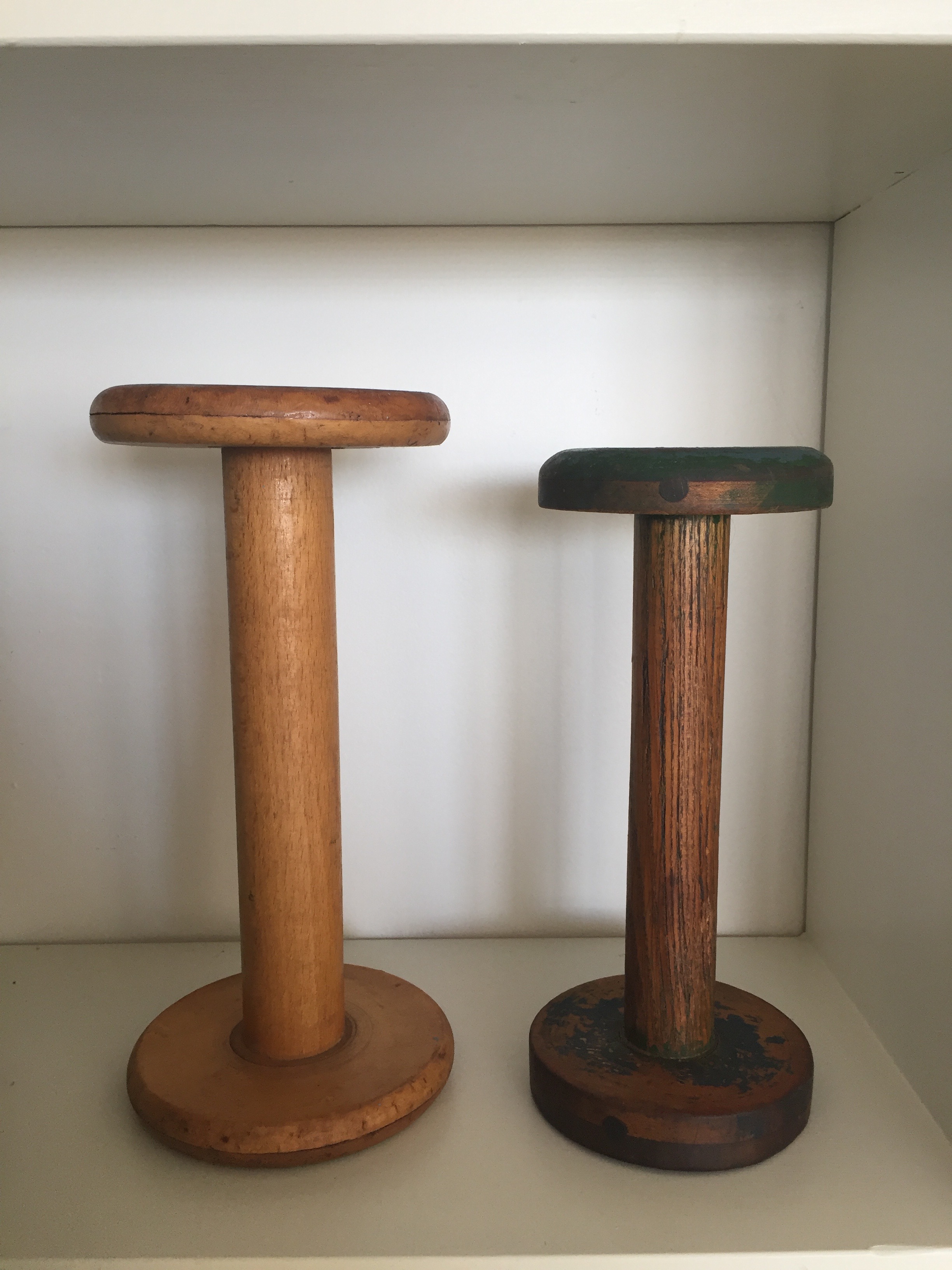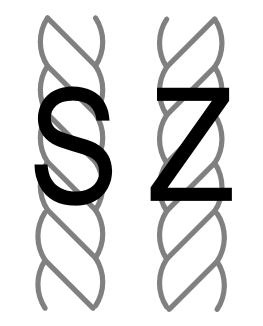|
Lazy Kate
In spinning, a lazy kate (also simply known as a kate) is a device used to hold one or more spools or bobbins in place while the yarn Yarn is a long continuous length of interlocked fibres, used in sewing, crocheting, knitting, weaving, embroidery, ropemaking, and the production of textiles. Thread is a type of yarn intended for sewing by hand or machine. Modern manufac ... on them is wound off from the side of the bobbin. Typically, a kate consists of multiple rods, which allow the bobbins to spin. Tensioned kates have a band that loops over the bobbins to prevent them from spinning freely. Some spinning wheels have built-in kates, although these tend to be more cumbersome to use than free-standing ones. Kates are commonly used to ply yarn but may be used for any task which involves winding off yarn from a bobbin. While a wooden kate such as the one pictured is much sturdier, the same effect can be achieved with a cardboard box and some sort of dowels. References ... [...More Info...] [...Related Items...] OR: [Wikipedia] [Google] [Baidu] |
Spinning (textiles)
Spinning is a twisting technique to form yarn from fibers. The fiber intended is drawn out, twisted, and wound onto a bobbin. A few popular fibers that are spun into yarn other than cotton, which is the most popular, are viscose (the most common form of rayon), and synthetic polyester. Originally done by hand using a spindle whorl, starting in the 500s AD the spinning wheel became the predominant spinning tool across Asia and Europe. The spinning jenny and spinning mule, invented in the late 1700s, made mechanical spinning far more efficient than spinning by hand, and especially made cotton manufacturing one of the most important industries of the Industrial Revolution. Process The yarn issuing from the drafting rollers passes through a thread-guide, round a traveller that is free to rotate around a ring, and then onto a tube or bobbin, which is carried on to a spindle, the axis of which passes through a center of the ring. The spindle is driven (usually at an angular ... [...More Info...] [...Related Items...] OR: [Wikipedia] [Google] [Baidu] |
Bobbin
A bobbin or spool is a spindle or cylinder, with or without flanges, on which yarn, thread, wire, tape or film is wound. Bobbins are typically found in industrial textile machinery, as well as in sewing machines, fishing reels, tape measures, film rolls, cassette tapes, within electronic and electrical equipment, and for various other applications. Industrial textiles Bobbins are used in spinning, weaving, knitting, sewing, and lacemaking. In these practices, bobbins were invented to "manage the piles of thread and yarn that would be mechanically woven into cloth," where the mechanical began using human power, but eventual became machine-driven. In these applications, bobbins provide storage, temporary and permanent, for yarn or thread. Historically, bobbins were made out of natural materials such as wood, or bone. While not in principle an invention of the Victorian era—bobbins in the production of textiles were in earlier use—the machinery introduced in that era ... [...More Info...] [...Related Items...] OR: [Wikipedia] [Google] [Baidu] |
Yarn
Yarn is a long continuous length of interlocked fibres, used in sewing, crocheting, knitting, weaving, embroidery, ropemaking, and the production of textiles. Thread is a type of yarn intended for sewing by hand or machine. Modern manufactured sewing threads may be finished with wax or other lubricants to withstand the stresses involved in sewing. Embroidery threads are yarns specifically designed for needlework. Yarn can be made of a number of natural or synthetic materials, and comes in a variety of colors and thicknesses (referred to as "weights"). Although yarn may be dyed different colours, most yarns are solid coloured with a uniform hue. Etymology The word yarn comes from Middle English, from the Old English ''gearn'', akin to Old High German ''garn'', "yarn," Dutch "garen," Italian ''chordē'', "string," and Sanskrit ''hira'', "band." History The human production of yarn is known to have existed since the Stone Age and earlier prehistory, with ancient ... [...More Info...] [...Related Items...] OR: [Wikipedia] [Google] [Baidu] |
North Light Books
F+W, (formerly F+W Publications and F+W Media), was a media and e-commerce company headquartered in New York City. Founded in 1913, F+W published magazines, books, digital products (including e-books and e-magazines), produced online video, offered online education, and owned and operated e-stores, as well as consumer and trade shows. History F+W was named after two of its early publications: ''Farm Quarterly'' and '' Writer's Digest''. The company grew though a series of acquisitions, including book publisher David & Charles, Krause Publications in 2002, '' Horticulture'' magazine, and Adams Media in 2003. The private equity firm ABRY Partners purchased F+W in 2005. In August 2012 F+W Media acquired Interweave, an arts and crafts media company based in Loveland, Colorado. In 2014, F+W Media acquired New Track Media, renamed itself F+W, and was acquired by the private equity company Tinicum. In 2008, the company began to focus more on e-commerce activities and offering produc ... [...More Info...] [...Related Items...] OR: [Wikipedia] [Google] [Baidu] |
Plying
In the textile arts, plying (from the French verb ''plier'', "to fold", from the Latin verb ''plico'', from the ancient Greek verb .) is a process of twisting one or more strings (called strands) of yarn together to create a stronger yarn. Strands are twisted together in the direction opposite that in which they were spun. Plied yarns will not unravel, break, or degrade as easily as unplied yarns. When enough twist is added to the plies to counter the initial twist of each strand, the resulting yarn is "balanced", having no tendency to twist upon itself. The number of strands used to make the yarn is usually the same as the number of plies it has. Two-ply yarn means two strands were used, three-ply yarn means three strands were used, etc. Embroidery floss is generally a six-ply yarn, for example. There are some exceptions to this, most notably in chain plying. Plying handspun yarns There are two common ways to ply a balanced yarn: regular and chain plying. Both methods inv ... [...More Info...] [...Related Items...] OR: [Wikipedia] [Google] [Baidu] |
Spinning
Spin or spinning most often refers to: * Spinning (textiles), the creation of yarn or thread by twisting fibers together, traditionally by hand spinning * Spin, the rotation of an object around a central axis * Spin (propaganda), an intentionally biased portrayal of something Spin, spinning or spinnin may also refer to: Physics and mathematics * Spin, the rotation of an object around a central axis * Spin (physics) or particle spin, a fundamental property of elementary particles * Spin group, a particular double cover of the special orthogonal group SO(''n'') * Spin tensor, a tensor quantity for describing spinning motion in special relativity and general relativity * Spin (aerodynamics), autorotation of an aerodynamically stalled aeroplane * SPIN bibliographic database, an indexing and abstracting service focusing on physics research Textile arts * Spinning (polymers), a process for creating polymer fibres * Spinning (textiles), the creation of yarn or thread by twisting fib ... [...More Info...] [...Related Items...] OR: [Wikipedia] [Google] [Baidu] |



